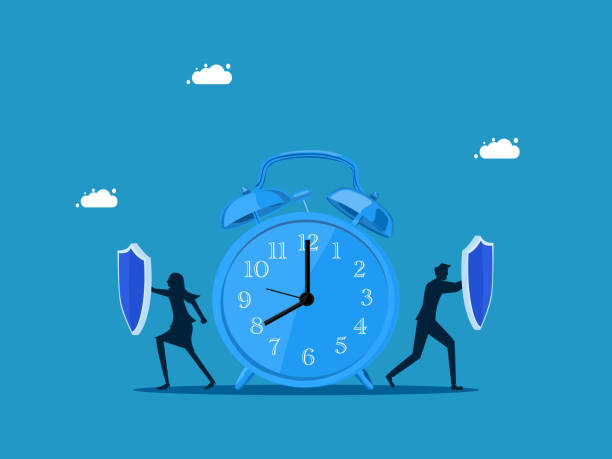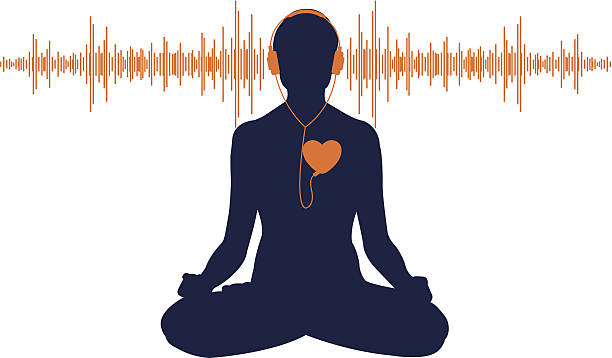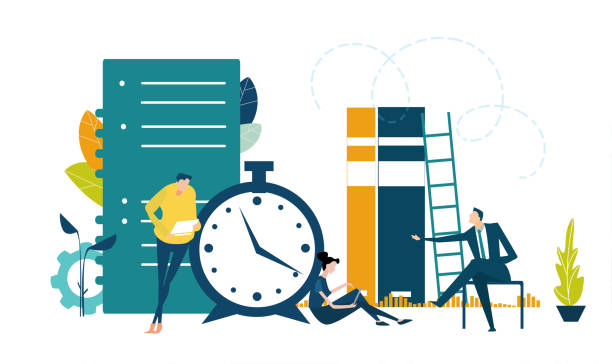In today’s fast-paced world, juggling professional responsibilities and academic pursuits can feel like walking a tightrope. Productivity for work and study isn’t just about checking boxes—it’s about making every moment count. This article dives deep into practical, creative strategies to help you master your time, energy, and focus, whether you’re grinding through spreadsheets or cramming for exams. If you’re looking for a broader perspective on harmonizing these dual demands, check out Balancing Work and Study: A Guide for Busy Professionals, which offers a comprehensive roadmap for thriving as a working student. Here, we’ll zero in on actionable techniques to supercharge your efficiency and keep burnout at bay.
Why Productivity for Work and Study Matters
Let’s face it: time is a finite resource, and when you’re splitting it between a demanding job and rigorous studies, every second counts. Mastering productivity for work and study isn’t just about getting more done—it’s about working smarter, not harder. By honing your ability to prioritize, focus, and recharge, you can achieve your goals without sacrificing your sanity. Whether you’re a professional pursuing a certification or a student moonlighting to pay tuition, productivity is the key to unlocking your potential. Platforms like Knowsia can amplify your efforts with tailored resources, from study tools to expert-led content, helping you stay on track.
The Cost of Poor Productivity
When productivity falters, chaos creeps in. Missed deadlines, half-finished assignments, and frazzled nerves become the norm. Studies show that chronic multitasking—common among working students—can reduce efficiency by up to 40%. Worse, it spikes stress levels, leading to burnout. On the flip side, streamlined workflows and intentional habits can boost output and leave you feeling in control. The goal? Create systems that let you tackle tasks with clarity and confidence, whether you’re drafting a report or memorizing formulas.
The Power of Intentional Systems
Productivity thrives on structure, but not the rigid, soul-crushing kind. Think of it as building a scaffold that supports your unique rhythm. By blending discipline with flexibility, you can adapt to unexpected curveballs—like a last-minute work project or a tricky exam question. Tools like time-blocking, task batching, and digital aids (hello, Knowsia’s AI-powered question banks!) can transform scattered efforts into a well-oiled machine. Let’s explore how to make that happen.
Crafting a Productivity for Work Mindset

Your mindset is the foundation of productivity for work and study. It’s not about willpower alone—though that helps—but about cultivating habits that align with your goals. A growth-oriented mindset, paired with practical strategies, can turn overwhelming to-do lists into manageable wins.
Embrace the Power of Prioritization
Not all tasks are created equal. The Eisenhower Matrix, a simple yet brilliant tool, helps you sort tasks into four quadrants: urgent and important, important but not urgent, urgent but not important, and neither. Focus on what moves the needle—think critical work projects or high-stakes study sessions—and delegate or ditch the rest. For example, instead of obsessing over inbox zero, carve out uninterrupted time for deep work, like analyzing data or reviewing lecture notes.
Tame Distractions with Focus Rituals
Distractions are productivity’s archenemy. Social media, email pings, and even well-meaning colleagues can derail your flow. Enter focus rituals: intentional practices to anchor your attention. Try the Pomodoro Technique—25 minutes of focused work followed by a 5-minute break. Or, set up a distraction-free zone by silencing notifications and using apps like Forest to stay on task. Knowsia’s practice resources, like past exam questions, are perfect for distraction-free study sprints.
Reframe Setbacks as Learning Opportunities
Mistakes happen. A missed deadline or a flubbed quiz doesn’t define you—it’s a chance to pivot. Adopt a “fail forward” mentality: analyze what went wrong, adjust your approach, and keep moving. For instance, if you’re struggling to retain study material, try active recall techniques, like flashcards, instead of passive rereading. This mindset shift builds resilience, ensuring setbacks don’t derail your progress.
Time Management: Your Secret Weapon

Time management is the backbone of productivity for work and study. It’s not about squeezing every minute dry but about using time strategically to maximize output and minimize stress.
Master the Art of Time-Blocking
Time-blocking is like giving your day a blueprint. Assign specific chunks of time to tasks—say, 9–11 a.m. for work emails, 11:30 a.m.–1 p.m. for studying. This method reduces decision fatigue and keeps you focused. Pro tip: leave buffer zones for unexpected interruptions, like a colleague’s urgent request or a tricky study concept. Tools like Google Calendar or Notion can help you visualize and stick to your blocks.
Batch Tasks for Efficiency
Batching is a game-changer. Group similar tasks—like responding to emails or reviewing study notes—into dedicated sessions. This minimizes context-switching, which can sap your mental energy. For example, dedicate an hour to grading papers or solving practice problems instead of tackling them sporadically. Knowsia’s question banks are ideal for batching study sessions, letting you power through related topics in one go.
Leverage Dead Time
Those in-between moments—commuting, waiting for a meeting—can be goldmines. Use them to review flashcards, listen to lecture recordings, or brainstorm work ideas. Apps like Audible or Knowsia’s mobile platform make it easy to study on the go. Even 10 minutes of focused effort can add up, turning “wasted” time into productive wins.
Energy Management: Fueling Productivity
Productivity isn’t just about time—it’s about energy. You can have the perfect schedule, but if you’re running on fumes, you’re toast. Managing your energy is critical for sustained productivity for work and study.
Optimize Your Physical Energy
Your body is your engine, so fuel it right. Prioritize sleep (7–9 hours, no exceptions), eat nutrient-dense meals, and move regularly. A quick 10-minute walk between work and study sessions can recharge your brain. Hydration matters too—dehydration can tank focus by 20%. Keep a water bottle handy and sip throughout the day.
Harness Your Mental Energy
Mental clarity drives productivity. Practice mindfulness techniques, like a 5-minute meditation, to reset your brain before diving into tasks. Journaling can also help you process stress and clarify goals. If you’re feeling overwhelmed, try the “brain dump” method: jot down every task or worry on your mind, then organize it later. This clears mental clutter, letting you focus.
Align Tasks with Energy Peaks
We all have natural energy rhythms. Are you a morning lark or a night owl? Schedule high-effort tasks—like complex work projects or dense study material—during your peak hours. Save low-energy tasks, like admin work or light review, for when you’re less sharp. Tracking your energy patterns for a week can reveal your sweet spots.
Tools and Resources to Boost Productivity

The right tools can turbocharge your productivity for work and study. From apps to platforms, here’s how to build your productivity arsenal.
Digital Tools for Work and Study
- Trello or Asana: Organize tasks with boards and timelines. Perfect for tracking work projects and study milestones.
- Evernote or Obsidian: Capture notes, ideas, and study summaries in one place.
- Knowsia: Access AI-powered study tools, past questions, and expert content to streamline your learning. It’s a one-stop shop for academic success.
- Focus@Will: Stream music designed to enhance concentration during work or study sessions.
Analog Methods Still Shine
Don’t sleep on pen and paper. A bullet journal can be a creative way to plan your day, blending tasks, goals, and doodles. Or try the “one big thing” method: each day, write down one critical task for work and one for study. Checking those off feels like a victory lap.
Curate Your Learning Environment
Your workspace matters. Clear clutter, add plants, or pin up motivational quotes to spark joy. If noise is an issue, noise-canceling headphones or white noise apps can create a bubble of focus. For study, Knowsia’s platform lets you access resources anywhere, so you can turn a coffee shop or library into your productivity hub.
Avoiding Burnout: The Productivity Paradox
Pushing too hard can backfire. Burnout is real, and it’s the enemy of productivity for work and study. Here’s how to stay in the game for the long haul.
Schedule Downtime Like a Pro
Rest isn’t laziness—it’s strategy. Block out time for hobbies, friends, or Netflix binges. Even 20 minutes of “do nothing” time can recharge your batteries. Treat rest like a non-negotiable meeting with yourself.
Set Boundaries with Work and Study
Learn to say no. Politely decline non-essential work tasks or study group sessions that don’t serve your goals. Communicate clear boundaries with colleagues and classmates—like “I’m unavailable after 8 p.m.”—to protect your time. Knowsia’s flexible platform lets you study on your terms, so you don’t feel chained to a desk.
Listen to Your Body and Mind
Burnout sneaks up quietly. Warning signs include irritability, trouble focusing, or dreading tasks you once enjoyed. If you spot these, take a step back. Try a “micro-break”: close your eyes, breathe deeply for a minute, or stretch. If stress persists, consider talking to a mentor or counselor to recalibrate.

Putting It All Together: Your Productivity Plan
Ready to level up? Here’s a step-by-step plan to master productivity for work and study, blending everything we’ve covered.
- Assess Your Current State: For one week, track how you spend your time and energy. Identify leaks—like mindless scrolling—and areas where you shine.
- Set Clear Goals: Define what success looks like for work (e.g., finishing a project) and study (e.g., acing an exam). Break them into weekly and daily tasks.
- Build Your System: Combine time-blocking, batching, and focus rituals. Experiment with tools like Knowsia for study and Trello for work.
- Protect Your Energy: Schedule sleep, movement, and meals. Align tasks with your energy peaks and take breaks seriously.
- Review and Tweak: At the end of each week, reflect on what worked and what didn’t. Adjust your plan to keep improving.
Final Thoughts: Productivity as a Lifestyle
Mastering productivity for work and study isn’t a one-and-done deal—it’s a lifestyle. By blending mindset shifts, time management, energy hacks, and the right tools, you can turn chaos into clarity. Platforms like Knowsia make it easier, offering resources to streamline your studies and amplify your efforts. So, take a deep breath, start small, and watch your productivity soar. You’ve got this.

